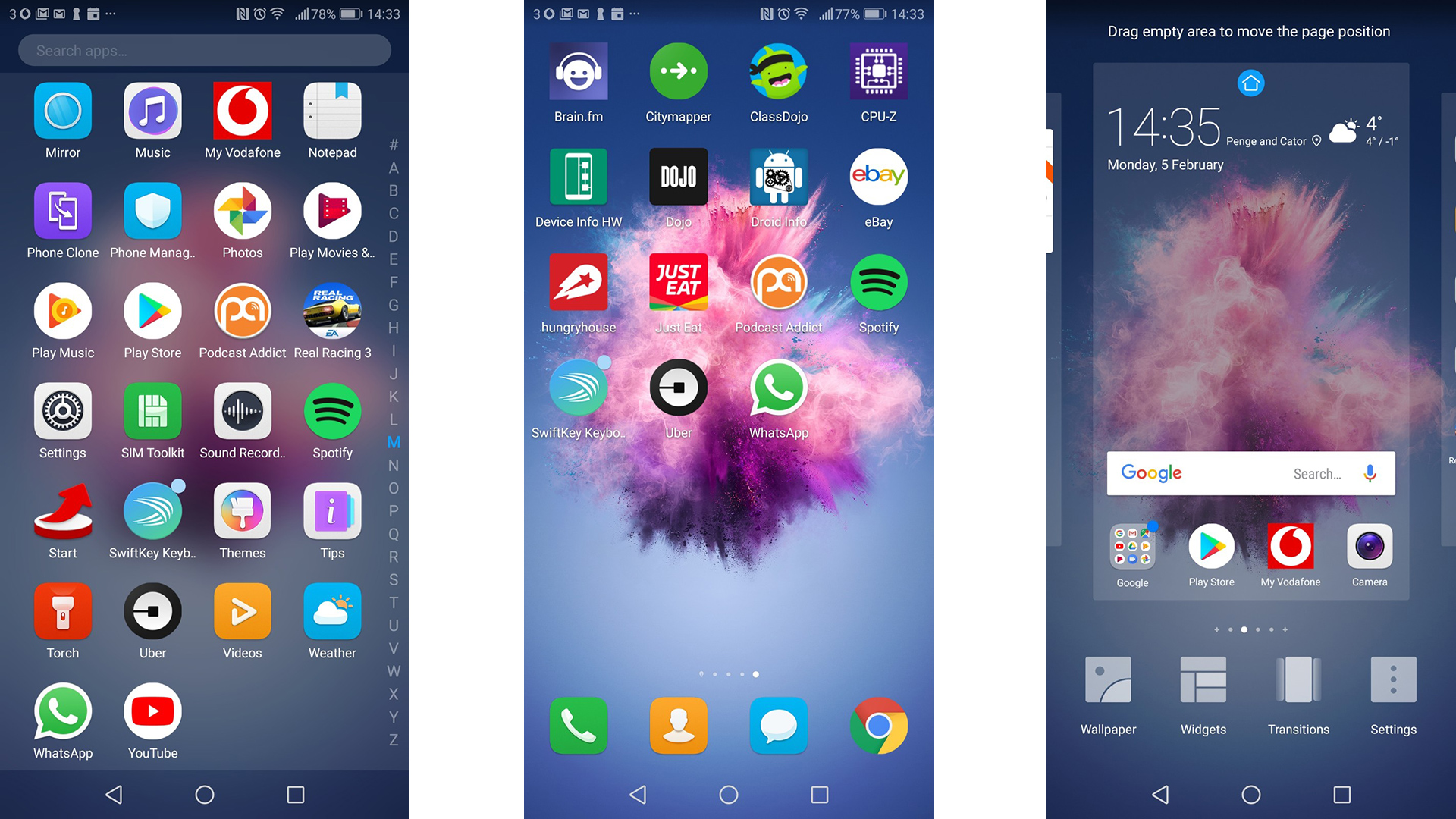Why you can trust TechRadar
Interface and reliability
- Android 8.0
- EMUI 8.0
- Some performance issues
The Huawei P Smart runs Android 8.0 with Huawei's EMUI version 8.0. It's all eights, though the phone is likely to get updated to Android 9 Pie at some point.
Whenever we start reviewing a phone with EMUI, we tend to head straight to the settings to change the home screen style. As standard EMUI leaves out the apps menu, for a more iPhone-like home screen-based experience.
You can reinstate it, though. This turns the Huawei P Smart from a phone with slightly strange software to a much more normal-feeling interface with almost zero learning curve.

The look is fairly inoffensive, although parts of Huawei's characteristic style remain. A 'Magazine' lock screen flashes up stock-style images when the phone is brought out of standby, and the setting menu looks different to Android's norm.
The Huawei P Smart's interface can be changed further with themes. These can get rid of the custom lock screen if you like, and alter icons and wallpapers. We tried one called Project Y with this phone for a few days.
It looks just about as good as the default one, and if you’re after a theme with a cartoony or unusual look, there are plenty to choose from.

EMUI isn't slow. The Huawei P Smart has no phone-ruining performance problems. However, in switching from the HTC U11 Plus to this phone we did notice the occasional moment of lag as the keyboard caught up with our input. Or, more rarely, when dragging down the notification bar.
This doesn't occur regularly as you type addresses into Chrome or messages into WhatsApp, though.
Performance is close enough to higher-end phones to avoid annoyance, but we noticed fewer of these blips in the Moto G5S Plus.
Movies, music and gaming
- Solid but not perfect gaming performance
- Widescreen aspect great for games and movies
- Slightly thin-sounding speaker
The GPU, the piece of hardware that handles graphics processing, is one of the Huawei P Smart's weaker parts. It uses a dual-core Mali-T830 chip, which is less powerful than the Adreno 506 of the Moto G5S Plus.
In high-end games like Asphalt 8, those keen on high frame rates will notice drops in the scrolling scenery. However, we're talking about slight dips into, say, 20-25fps rather than teen figures that really impact play.
The 18:9 screen aspect is also handy for console-style games like Dead Trigger 2 and Asphalt 8. It leaves more room for the virtual controls.

The Huawei P Smart’s audio shows clearer compromise. There's one speaker on the bottom, and it's relatively thin-sounding. The last couple of years have seen phones get by with a single driver just fine, providing enough bulk to the lower frequencies to add a touch of richness. This one is just okay.
There are no extra apps for audio or video either, beyond an FM radio most will ignore and a simple Dictaphone-style audio recorder app.
We'd rather have this approach than a phone weighed down by bloat software, though, and there are plenty of media players you can download for free from Google Play.
Performance and benchmarks
- Huawei-made octa-core CPU
- Raw performance in line with the price
Looking a little deeper into the Huawei P Smart's hardware, it has a HiSilicon Kirin 659 chipset. This is made by a Huawei subsidiary. Other mid-range phones tend to use either Qualcomm or MediaTek CPUs.
Aside from the weaker GPU, performance is roughly comparable with popular chipsets like the Snapdragon 625 and 630. There are eight Cortex-A53 cores in two clusters, with four clocked at 2.36GHz and the other four running at 1.7GHz.
The Huawei P Smart scores 3,734 points in Geekbench 4, which again is similar to phones in the same class with Snapdragon CPUs.
This is a 'powerful enough' phone rather than a spec monster, but the slight system lag and just okay gaming performance wouldn't put us off recommending this phone to most people.
It has 3GB of RAM, now the standard amount for this level of phone. And 32GB of storage, which leaves you enough room to install a lot of apps and games. There’s also a microSD card slot if you need more room.
Current page: Anything else I should know?
Prev Page Battery life and camera Next Page Verdict and competitionAndrew is a freelance journalist and has been writing and editing for some of the UK's top tech and lifestyle publications including TrustedReviews, Stuff, T3, TechRadar, Lifehacker and others.

